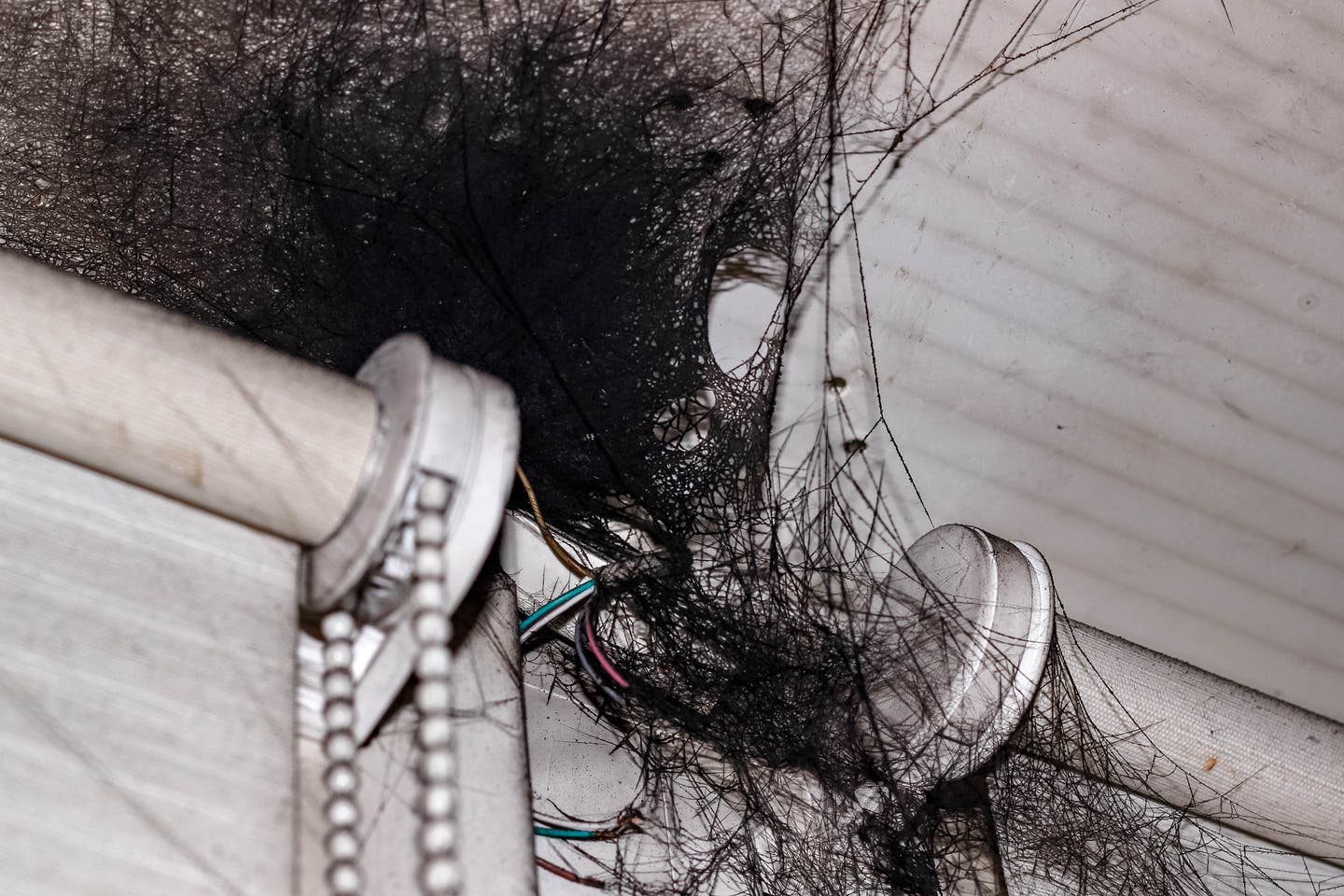
We all know what soot is: that black smudge that often follows a fire, big or small, inside your house. You might’ve seen it after a candle loses its flame or the last ember dies out in your fireplace. However, when cleaning up after an emergency fire, you may notice a strange string of web-like chains across your wall.
At first glance, it might look like you’ve got a spider infestation. For those with arachnophobia, don’t worry—these soot webs are actually “soot tags,” strings of carbon and tar released from a fire.
Soot Tags Explained
More commonly called “smoke webs” or “smoke cobwebs,” soot tags occur in low circulation areas after a fire. As the heat circulates into colder spaces, soot particles follow in chain-like formations and create these webbed, somewhat creepy structures.
While you might think you’ve neglected to dust the house, or that spiders have taken over your attic, soot tags are entirely new formations. In many cases, a fire will destroy any existing spider webs in your home. Though there may be the occasional exception, the mysterious nets are most likely created by soot.
How should I clean up soot tags?
Cleaning up after a fire can be tricky, and you probably want to get started right away. But it’s important to remember to wait until restoration professionals have cleared the space before entering.
Soot and Smoke Hazards
Spending any amount of extended time in an area that’s recently had a fire can expose you to lingering soot and smoke. These particles can cause long-term damage to your health, especially for those with compromised immune systems or respiratory issues. If necessary, a professional will provide you with the appropriate personal protective equipment to navigate the area safely.
After a fire, a thorough inspection by professionals, such as SERVPRO, before cleanup begins will help give you the peace of mind that the environment is safe and ready for entry.
Cleaning Up Soot Tags
In many cases, it’s recommended that you enlist the help of professionals to get rid of soot webs and other soot damage—but we’ll get to that in a moment.
A few tips:
Basic cleaning: use a mixture of dish soap, warm water, and a soft sponge to gently work away the soot webs. Soot tends to feel greasy, and excess agitation can cause more damage or stains.
Melamine sponges; known as Magic Erasers®, melamine sponges are an inexpensive tool that helps remove tricky stains.
Gently scrub: any harsh chemicals or movement as you clean can create an even greater problem.
When Should I Call the Professionals?
If the methods mentioned above aren’t doing the job, consider calling in the professionals.
SERVPRO® offers comprehensive fire damage cleanup and remediation to get you back in your home or space as quickly as possible. Our process often follows these seven steps:
Emergency contact: once you give us a call, the restoration process begins. Our professionals will ask you a series of questions to better understand your fire damage, helping ensure we arrive with the proper resources and equipment.
Inspection and assessment: We’ll inspect and test the affected spaces, along with adjoining rooms. We want to make sure we understand the extent of all fire, smoke, and soot damage to determine the appropriate course of action.
Board-up and roof-tarp service: walls, windows, and roofs are often affected by fire damage. SERVPRO® professionals are prepared to provide board-up and roof tarping services to protect missing windows or damaged walls or roofs.
Water removal and drying: if there’s been water damage, we’ll immediately begin the water damage remediation process. Once most of the water has been removed, we’ll place dehumidifiers and air movers to help complete the drying process.
Removal of smoke and soot from all surfaces: removing smoke and soot damage from ceilings, walls, and other surfaces requires specialized techniques and equipment.
Cleaning and sanitizing: all restorable items and structures will be cleaned using specialized techniques and equipment to restore these pieces to pre-fire condition. Our fogging equipment and industrial air scrubbers help remove odors from affected spaces.
Restoration: the final step involves returning your loss to pre-fire condition, “Like it never even happened.”® Restoration may involve smaller repairs such as painting or repairing drywall and carpet, or large-scale fixes like the complete reconstruction of certain areas.
To find out more about soot tags, our fire damage services, or other commercial cleaning services, visit our FAQ and Glossary or contact your local SERVPRO® team.